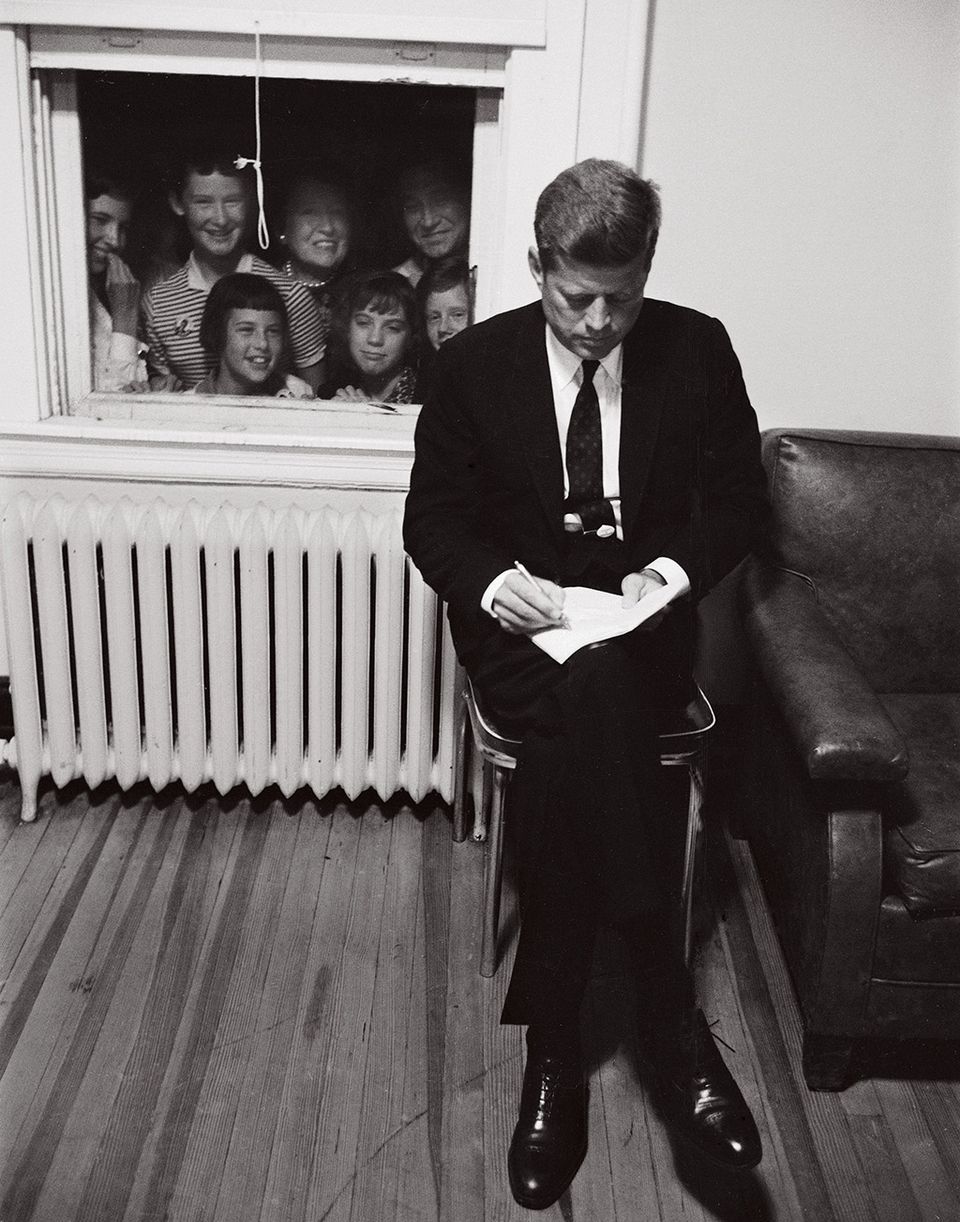

The Kennedys unofficially brought America into the modern world with their youth and glamour. Long before our phones became cameras, they knew the power of photography and their well-documented lives—triumphs and sorrows—are an indelible part of our collective memory. SAAM's director, Stephanie Stebich, stated, "The aptly named exhibition American Visionary: John F. Kennedy's Life and Times is a fitting tribute to the 35th President, who understood the importance of the arts in American society and the power of images to convey the spirit and aspirations of a country."
JFK's was the first modern presidential campaign, and employed the "Mad Men" talents of Madison Avenue as well as a slew of gifted photographers, photojournalists, and newsreel cameramen. In fact, this decade, from the early 1950s through the early 1960s is referred to as a golden age of photojournalism in America. JFK was the most photographed politician the country and the world had ever seen. According to John Jacob, the McEvoy Family Curator for Photography at SAAM, "politics and the media found common ground in the figure of JFK...and photography made John F. Kennedy's vision for America real to its citizens." JFK's personal charisma, private moments, and political accomplishments shine through in this exhibition.
Lawrence Schiller, a former Life magazine photojournalist (who ironically was assigned to Nixon's failed presidential campaign) organized the exhibition and reviewed 34,000 photographs, before choosing seventy-seven "images that told the story." The exhibition is divided into three sections: The Making of JFK, The Road to the White House, and the New Frontier. Included in the exhibition at SAAM are photographs by Schiller as well as Jacques Lowe, Yale Joel, Philippe Halsman, Paul Schutzer, Henri Dauman, and other noted photographers. A few are also credited as "photographer unknown," such as one depicting a JFK campaign event in Massachusetts from 1952 that Schiller pointed out during a brief tour of the galleries. Here, a hobbled JFK recovering from back surgery braces himself on crutches while what appears to be an endless line of women in hats wait on line to shake his hand. Charisma, indeed.
Schiller also reported that Caroline Kennedy's favorite image of her father is Paul Schutzer's photo (above) from September, 1960. JFK sits in a chair, preparing a speech for a Democratic rally in Baltimore, seemingly unaware that he has company. The window behind him is filled with the faces of smiling, adoring fans. In two of the most poignant images, a baby Caroline looks up at her father from her crib with all-knowing eyes, while in another JFK walks a pajama-clad JFK Jr. through the White House, presumably to bed. Each image speaks volumes.
Schiller's goal was to create an exhibition without sentiment. In the last room, images pay tribute to JFK's initiatives such as the Peace Corps, Civil Rights, and the space program. The exhibition concludes with images of the Kennedys landing at Love Field on November 22, 1963, the president's assassination, funeral, and a haunting image of a veiled Jacqueline Kennedy, when the photos would come to an end.
American Visionary: John F. Kennedy's Life and Times is based on the book JFK: A Vision for America, edited by Stephen Kennedy Smith and Douglas Brinkley. The exhibition remains on view through September 17, 2017.

















